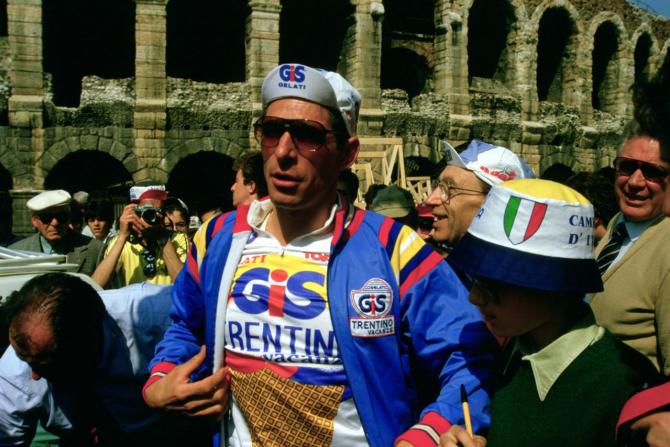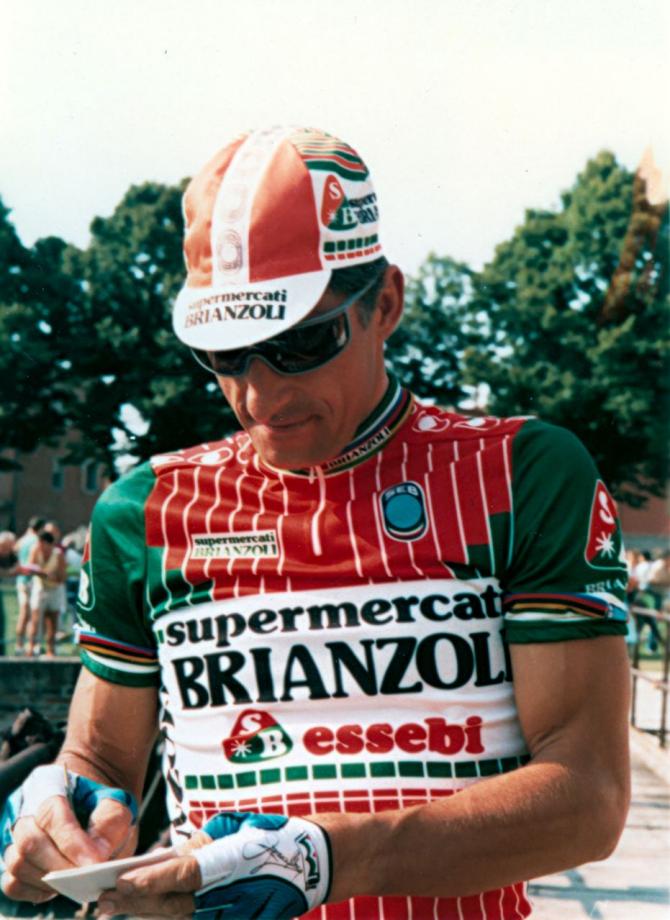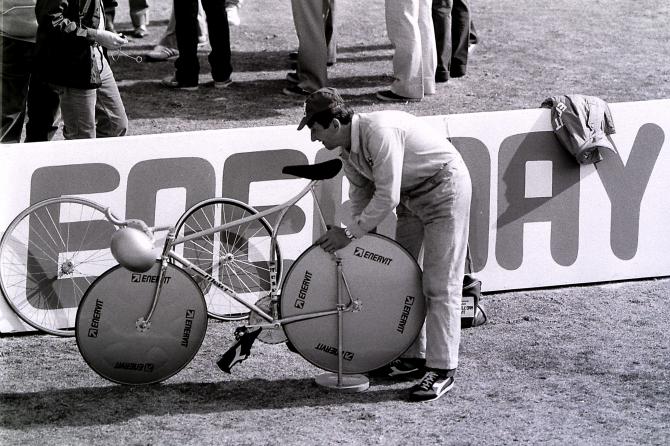Gallery: Francesco Moser's hour record
Italian celebrates 30 years after beating Merckx's record








































Exactly 30 years ago, Francesco Moser set a new Hour Record of 51.151km/h at altitude in Mexico City, marking a new era of sports science and bike technology that would revolutionise professional cycling.
Limited edition Merckx hour record bike
Cancellara to tackle hour record
Moser was 32 at the time and seemed in the final chapter of his career. Yet using disc wheels and an aerodynamic time trial bike, with coaching and preparation by Francesco Conconi, he smashed Eddy Merckx's seemingly unbeatable record of 49.431km. Moser first set a new record of 50.808km on January 19 and then extended the record even further to 51.151km on January 23.
The UCI changed the rules on the bike design allowed for the Hour Record in 1997, enforcing strict rules on the use of traditional bike designs and relegating any times set after Merckx's record as Best Hour Performance.
Fabian Cancellara (Trek Factory Racing) could be the next rider to attempt the Hour Record, perhaps as soon as the spring, after his Classics campaign.
"We realised it was possible"
Moser compares to his Hour Record success to that of famed Italian mountain climber Reinhold Messner, who also hails from the Italian Dolomites. Messner was one of greatest mountaineers in history, setting numerous records for the highest peaks in the world.
"It was the idea of Paolo Sorbini, the founder of Enervit, he loved a challenge. In the summer of 1983 we held a meeting at my home with my team sponsor Gis, my team and the Enervit team. We then did some tests on the track and they fitted me with a machine on my chest, a heart rate monitor," Moser recalled in an interview in today's Gazzetta dello Sport.
The latest race content, interviews, features, reviews and expert buying guides, direct to your inbox!
"We realised it was possible. I was 32 but was good at time trials. We created a good group for the project, with specialists for the bike, for the training, for my diet and my clothing."
"I went for Merckx's 5, 10, and 20km record on January 19 and we agreed I'd go for the Hour if I felt good. I did and so I went for it. I did 50.808, almost 1.4km better than Merckx."
"The second attempt was even better: 51.151, another 350 metres. People invaded the track after that ride and we celebrated in style."
Blood transfusion?
"Conconi was in charge and Ferrari his support, and they exchanged their work. Conconi translated the times and values into performance and prepared the tables. There wasn't any blood transfusions, before the first or second attempt. The benefits of altitude were enough," Moser told Gazzetta dello Sport.
That is in contrast to what he reportedly told L'Equipe.
"I was not the only one nor the first who used blood transfusions to improve my performance. I was told that Jacques Anquetil had done it and that was well before my time," he is quoted as saying in a 1999 interview.
"The method was being used everywhere. Sportspeople are always open to scrutiny but we should take a look at what normal people have in their medicine chest. It was my own blood. And I was not the only rider doing it. With EPO that is a whole new thing. It is dangerous and unnatural."
Moser recently went back on those words speaking to Italian newspaper Il Sole 24 ore.
"Lots of people have tried to dirty my effort but nobody broke the rules," the Italian business newspapers quotes him as saying.
"Blood transfusions weren't banned then. Did I do them? I've never said, other made insinuations that I did. But that doesn't make sense. It's like dirtying the wins by Bartali and Coppi, saying they took stuff that was later banned. The real innovations were the training, the use of a heart rate monitor, the climbing intervals, the bike and the aero bars...."
30th anniversary celebrations
Moser was the individual pursuit world champion in 1976 and went on to win Paris-Roubaix for three consecutive years in 1978, 1979 and 1980. He won over 200 races during his career and used what was learnt during his Hour Record attempts to revive his road career. He beat Laurent Fignon to win the 1984 Giro d'Italia and Milan-San Remo. Moser later attacked the sea level hour record on the Milan Vigorelli track in 1986 and returned to Mexico in 1994 to set a distance of 51.840 using Obree's tucked position.
Moser and many of the people involved in the success of the Hour Record attempt will gather in the Moser home in the Dolomites to remember and celebrate the 30th anniversary of he Hour Record on Saturday. Ercole Baldini, Vittorio Adorni, Maurizio Fondriest, Davide Cassani and Francesco Conconi are expected to attend.
This special photo gallery includes images of Moser's career and special images courtesy of Enervit, who sponsored Moser's Hour Record attempt.
Click here to see the full gallery.

Stephen is one of the most experienced member of the Cyclingnews team, having reported on professional cycling since 1994. He has been Head of News at Cyclingnews since 2022, before which he held the position of European editor since 2012 and previously worked for Reuters, Shift Active Media, and CyclingWeekly, among other publications.